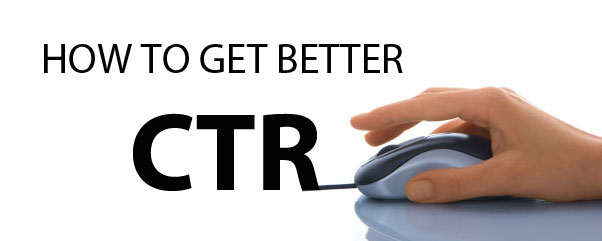The famous acronym, “click- through rate“, can be considered a nightmare by some advertisers, but there are several ways to improve it.
Over the years, statistics have shown that having the CTR of your campaign at 2% is considered a huge success, which means two people out of a hundred clicking on your banner.
In 2012 AdGooroo, a consulting company on the web, has analyzed 20 million of paid advertising on the internet in the USA with the aim of identifying the key factors that have shown a higher CTR yield.
Do not start to cheer.
There are no magic formulas to find the foolproof strategy, but with 20 million collected data we can begin to figure out which way to go.
The results showed some tips to put into practice to maximize the click-through rate of an ad.
‘Www’ or Not ‘Www’ – That is The Question
The data collected showed that the advertising which had long domains, including the www, they got more success than those who had the short domain.
The big surprises always come from small things.
In fact, what you want to include in addition to the name is a symbol of assurance as ™ , © , ®, which have boosted the click of 90% for the advertising that incorporated them.
Photo credit @ http://www.metaseo.com/wp-content/uploads/2011/07/click-through-rate1.jpg
No Numbers or Charges
The ads which did not show numbers and percentages have been 16% more successful compared to those that contained them.
This is also true for the exclamation points that have been proven deterrents for users, totaling 9 % less in comparison to the advertising without them.
No one likes being told what to do, so it is always best to avoid exclaiming loudly phrases such as “click now ” and ” download now”, so much so that all the advertising that contained words like these have achieved a 7% less in relation to all other advertising.
So always better not to force the tones.
Free is Always Good
All advertising designed containing the word “free” recorded a 9% more clicks compared to those without this sweet magic word.
Instead, writing a price or a percentage off is not always a good omen : this strategy will save you money on clicks to pay for indexing the target, but it will lower the CTR of 17 percentage points, guaranteeing a penalty on the quality score.
Confined Space : a Misunderstood Limit
The space is always too little in paid advertising and being concise is not always easy.
The study conducted by AdGoroo revealed that one must make the most of every single letter.
The ads with text longer than the average recorded a higher percentage of clicks in relation to the shorter ones by about 64% .
The space must be fully exploited to send a clear message.
Simply giving little information seems to have the effect of not encouraging to click .
What do you think?
Have you found some interesting hints in this article?
Please share your thoughts in the comments below, thanks!

Hi Erik,
Its revealing seeing what possibly could improve CTR for content marketers. The Adgooroo reports seem to be actionable. I guess its time to apply these changes in our campaign to see if we there would be an increase in the CTR! 😀
This comment was shared in kingged.com – the social bookmarking and content syndication website for Internet marketers where this post was shared.
Sunday – kingged.com contributor
Good luck with that campaign, Sunday!
Thanks for your comment here.
Managing to get the power word or magic word ‘free’ can dramatically boost CTR. That’s a proven fact. This strategy actually works, because people appreciate free things first!
Also, telling them/instructing them is not a good tactic. Not in most cases. It is like goading them and ordering them. Many times, they feel like they are being pressurized to give in and follow the instructions mentioned there. Again, not a welcome move!
Thanks for pointing out the spacing and placement aspect of the ads and how they affect CTR!
I found link to this post on Kingged.
Arun
Sometimes applying just those few tips can dramatically improve the CTR of our campaigns! 😉
Thanks for your feedback, Arun.